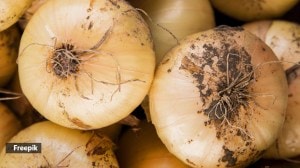If you are fasting,aim to eat less,not starve
Communities across the world follow rituals of fasting.
Communities across the world follow rituals of fasting. The origins of these rituals are interesting. Globally,seasonal famines have always been a part of agricultural societies. All ancient populations have been frequently subjected to selective pressure by famine,especially since the dawn of agriculture. According to researchers,these hungry seasons are associated with a decline in fertility. Further,the body adapts to lack of food by lowering its energy consumption. This is followed by rapid deposit of energy as body fat so that people can survive periods of starvation. This ‘thrifty gene hypothesis has been suggested as a mechanism for hoarding calories.
Proponents of this theory use it to explain why certain populations,particularly the developing agricultural economies have a genetic predisposition to high obesity and type II diabetes. Although the thrifty gene concept lacks experimental validation,it is exciting to understand whether evolution is to be blamed for our susceptibility to obesity and diabetes. Discovering whether past famines and food scarcity have created particularly vulnerable populations would certainly help us solve this mystery. Such knowledge could help public health messages and initiatives to combat obesity,particularly in India.
Perhaps Navratra could be rooted in such an agricultural cycle. During this time,people fast for nine days. It is observed twice a year and calculated based on the lunar calendar,both times when crops are harvested.
During Navratra,perhaps a pre-harvest time,traditional staples like wheat,rice,pulses and vegetables are prohibited.
There is little evidence to support the popular belief that fasting is a way of detoxification. In fact,some people may put on weight after they end their fast.
A good fasting programme must aim to eat less but not starve. It should include plenty of fluids,water,fresh fruits and vegetables and increase disease fighting nutrients like anti-oxidants and phyto-chemicals.
A good fasting programme may be valuable if followed regularly. This technique conforms to scientific principles of balance in nutrition. It helps control weight,improves digestion,energy and prevents diseases. Strict fasting is not recommended for children,diabetics,heart patients,sick and elderly. It must be done under the supervision of a physician or nutritionist.
Ideally,you should break a fast with fluids like lassi,buttermilk,vegetable or fruit juices. Do not eat too much immediately after breaking a fast.
As the old adage goes,Even a fool can fast,but only a wise man knows how to break a fast properly and to build up properly after the fast.
Ishi Khosla is a former senior nutritionist at Escorts. She heads the Centre of Dietary Counselling and also runs a health food store. She feels that for complete well-being,one should integrate physical,mental and spiritual health. According to her: To be healthy should be the ultimate goal for all.



- 01
- 02
- 03
- 04
- 05




























